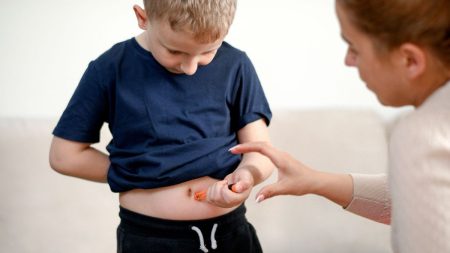Haemochromatosis, a genetic condition affecting individuals of Celtic descent particularly in regions like Ireland, Scotland, Wales, and Brittany, still suffers from widespread unawareness. The disease is characterized by excessive iron accumulation in the body, leading to deposits on vital organs, which can cause severe health issues such as cirrhosis, liver cancer, and heart disease. While iron is crucial for producing hemoglobin—a protein that allows for oxygen transport in red blood cells—overloading the body with iron can have detrimental effects, especially for those of Irish heritage. With symptoms often including fatigue and joint pain, individuals affected by haemochromatosis may go undiagnosed for years, exacerbating health risks and complications.
The hereditary nature of haemochromatosis is traced back to faulty copies of the HFE gene, which regulates iron absorption in the body. For a person to develop the condition, they must inherit two defective copies of this gene, one from each parent. If only one copy is inherited, the individual is considered a carrier and is less likely to experience symptoms. Diagnosis generally occurs through blood tests that reveal the presence of these gene mutations. Symptoms may emerge as early as the age of 30, although they are more frequently observed in men around 50 and in women about a decade later, often influenced by factors such as menopause. The personal accounts of individuals, such as Matt Skinner, reveal the struggle of obtaining a diagnosis despite experiencing debilitating symptoms that are often misattributed to other conditions like depression.
Haemochromatosis is sometimes referred to as the “Celtic Curse” due to its prevalence among Celtic populations, especially in Ireland. Recent studies indicate that one in ten people in Northern Ireland may face genetic risks associated with the condition, while rates are approximately one in 113 in Scotland and one in 150 in England and Wales. Genetic traces of the disease have been discovered in human remains dating back to the Neolithic period, underscoring its historical significance in Celtic regions. Despite this increased awareness, researchers remain unsure why the disease is particularly common among those of Celtic heritage, sparking continued investigation into genetic and historical factors.
Despite the absence of a cure, haematologists emphasize that haemochromatosis can be managed effectively through early diagnosis and appropriate treatment. Increased health awareness campaigns aim to encourage testing in at-risk populations, which can significantly reduce potential organ damage from excess iron levels. A study published by Haemochromatosis UK in 2022 highlighted the substantial economic burden posed by the condition, estimating over €400 million in excess treatment costs related to osteoarthritis and liver disease connected to the conditions caused by iron overload. For individuals diagnosed early, the condition can often be managed through regular blood removal procedures known as venesection or phlebotomy, which mimic blood donation practices and are essential for decreasing iron levels in the body.
Treatment options for haemochromatosis center primarily around venesection and chelation therapy. Venesection involves the regular removal of blood to lower iron levels while chelation therapy uses medication—often administered intravenously—to eliminate excess iron and heavy metals from the bloodstream. Patients such as Matt Skinner and Edward Holland have both undergone these treatments, sharing insights into how such procedures have improved their quality of life. Skinner’s experience of starting venesections highlighted the importance of early intervention, allowing him to manage his iron levels effectively, while Holland’s journey has shown that, despite late diagnosis, improvements in energy and overall health can be achieved through continuous treatment.
The two men are passionate about raising awareness regarding haemochromatosis, underlining the significance of early detection in mitigating health complications. They express frustrations over the lack of familiarity with the condition among healthcare professionals and the general populace. Skinner, who hadn’t encountered anyone else with haemochromatosis prior to his diagnosis, advocates for increased visibility and education surrounding the condition. By sharing their experiences, both Skinner and Holland hope to encourage testing and foster greater recognition of the symptoms associated with haemochromatosis, thereby reducing the number of individuals who remain unaware of their condition and improving health outcomes for future patients.














